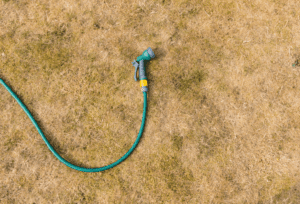People, Pets, And Specially Designed Insect Controls
For at least 45 years, since Rachael Carson published her anti-pesticide book Silent Spring, concerned homeowners have questioned the advisability of using pesticides in and around homes.
Through subsequent decades, countless studies carried out by numerous research institutions, including government agencies like the Environmental Protection Agency [established in 1973], have dissected and evaluated literally thousands of compounds used to control pests. Important questions were asked and answered; are pesticides safe for home use, around pets and people? Do pesticides harm the natural environment and ecology? Do some pesticide ingredients actually cause cancerous tumors?


These questions and more have been repeatedly studied with what now appears to be conclusive evidence. Answering the general question, are pesticides safe, requires an understanding of the term safe and begs still another question, how safe is safe?
The key to understanding the safety issue is being clear about toxicity. Are pesticides toxic, and therefore unsafe? Yes….and no. There may be risks attached to pesticide use if and when these chemicals are not used according to labeled instructions; standard practices established to ensure that any risk is so small as to be literally un measurable. Fact is, when chemicals of any kind are used according to the label, one might say they are safe; if we define ‘safe’ to mean the risk of exposure is so low that it can be discounted in typical use situations.
Having said that and understanding that the EPA and others prohibit the use of the term “safe” when describing pesticides, the important point is that, to be used effectively without harm, all pesticides must be used as directed on the label. It’s really that simple.
Most homeowners don’t stop to think about safety when we consume chemicals like common aspirin, for example. Still, an over-dose of aspirin can be as or more toxic [harmful] to us than almost all common household pesticides, those used in the kitchen and on the lawn.
Again, the key to safe pesticide use is to follow the label.
A material’s relative toxicity is determined by the concentration of the chemical and the dose, or amount of material applied or to which one is exposed.
Most lawn weed control products, are applied, according to labeled instructions, in water at a concentration of 2% or less. When you see a lawn care technician spraying dandelions and clover, what you are actually seeing applied to the lawn is 98% water! Water is the safe and effective carrier of the pest control material.
Likewise, when you take two aspirin for a simple headache, you are also ingesting such a small amount of active ingredient, the risk is inconsequential.
Look at the tube of toothpaste in your bathroom. Most contain fluoride. And fluoride, in high doses is very toxic, dangerously so. Still, we brush our teeth day after day with toothpaste containing fluoride. Is it poisonous? Toxic over time? Careful research says the answer is no.
To put it all into perspective, think about pesticides as medicines; curative chemicals designed to rid the home or lawn of nuisance pests, some of which can carry germs and diseases.
If, after understanding the facts about pesticide safety and risk, you are still unconvinced about the reasonable use of pesticides, there are a multitude of organic, non-chemical pest controls you may try. Will the results be the same? That remains very much an open question.
The link here describes the sensible use of home and lawn pesticides.
Join Our Free Lawn Care Newsletter
Stay Up to Date With The Latest News & Updates
* We don’t share your info with anyone ever.




